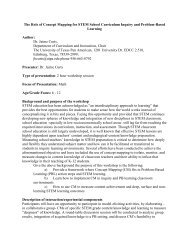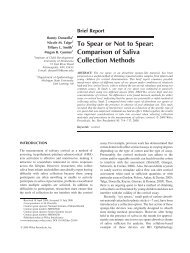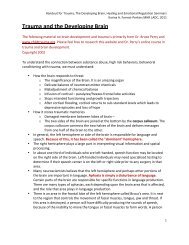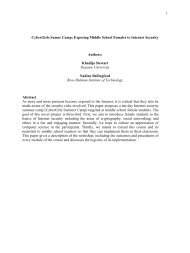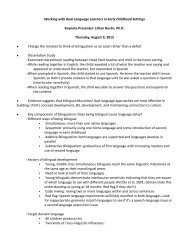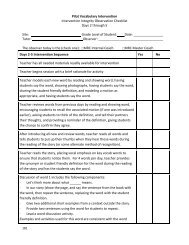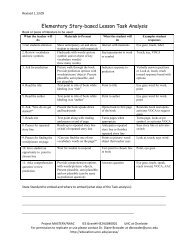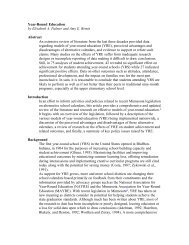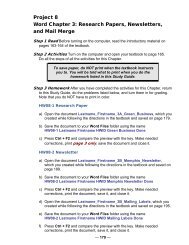Introduction to Positive Ways of Intervening with Challenging Behavior
Introduction to Positive Ways of Intervening with Challenging Behavior
Introduction to Positive Ways of Intervening with Challenging Behavior
You also want an ePaper? Increase the reach of your titles
YUMPU automatically turns print PDFs into web optimized ePapers that Google loves.
Glossary<br />
This Glossary has been developed as a supplement <strong>to</strong> the accompanying Intervention Tip Sheets <strong>to</strong> assist teachers<br />
and parents in providing the best possible educational opportunities <strong>to</strong> students <strong>with</strong> emotional and behavioral<br />
disorders. This Tip Sheet was published by the Institute on Community Integration, College <strong>of</strong> Education,<br />
University <strong>of</strong> Minnesota, Minneapolis, and was authored by Kareen Smith <strong>of</strong> the Institute.<br />
A-B-C analysis A technique <strong>to</strong> identify the relationship between environmental fac<strong>to</strong>rs and behavior (antecedent<br />
- behavior - consequence).<br />
ALT-R Reinforcement <strong>of</strong> alternative behavior.<br />
antecedent stimulus A stimulus present immediately before the occurrence <strong>of</strong> a behavior. It may or may not<br />
serve as a discriminative stimulus.<br />
artificial reinforcers Consequences used <strong>to</strong> reinforce behaviors which do not naturally occur outside <strong>of</strong> the<br />
intervention environment. For example, reinforcing appropriate peer interactions <strong>with</strong> stickers (see natural<br />
reinforcers).<br />
assessment The systematic gathering <strong>of</strong> information in order <strong>to</strong> make educational decision.<br />
augmentative communication <strong>Ways</strong> <strong>of</strong> exchanging information other than verbally, i.e., through hand signs,<br />
pho<strong>to</strong>graphs, computers, etc.<br />
aversive stimulus A stimulus which, due <strong>to</strong> its undesirable nature, serves <strong>to</strong> decrease the probability that a<br />
behavior will occur. Often occurs as a consequence <strong>of</strong> a behavior (i.e., punisher). Alternately, removal <strong>of</strong><br />
aversive stimuli can serve <strong>to</strong> increase the likelihood that a behavior will be exhibited.<br />
aversive procedure Any procedure which utilizes an aversive stimulus for the purpose <strong>of</strong> changing behavior<br />
(e.g., making a student write sentences for whispering during class time).<br />
backward chaining Instructional method <strong>of</strong> teaching a task which begins <strong>with</strong> the last sub-task <strong>of</strong> the sequence<br />
and moves backward through the chain <strong>of</strong> sub-tasks as each is mastered (see chained task/response, chaining,<br />
forward chaining).<br />
baseline The rate established by data collection <strong>of</strong> the natural occurrence <strong>of</strong> a target behavior.<br />
behavior An observable and measurable act exhibited by a person which has a beginning and an end and can be<br />
reliably measured by more than one individual.<br />
behavioral objective The desired behavior <strong>to</strong> be achieved after intervention, including the degree <strong>to</strong> which it will<br />
be performed (see objective).<br />
chained task/response A skill or behavior which is comprised <strong>of</strong> sequenced, discrete sub-tasks.<br />
chaining A teaching method which breaks a task in<strong>to</strong> sub-tasks and teaches each sub-task one at a time,<br />
sequentially. Mastery <strong>of</strong> a sub-task is required before teaching <strong>of</strong> the next sub-task is undertaken (see chained<br />
task/response, forward chaining, and backward chaining).




